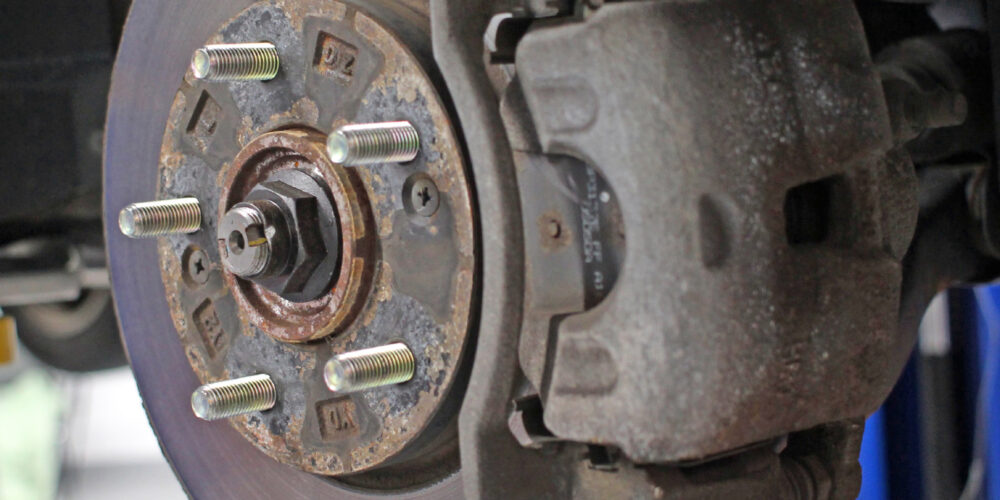I was recently doing a brake job on my 2002 Jaguar X-Type. On one of the rear caliper bolts there was a 12-oz rubber and steel donut. The reason for the weight is to help dampen vibrations and shift the frequency. It is the same approach GM engineers used on the new Camaro when they placed what appeared to be lead wheel weights on the caliper. It works, but it is not the most attractive of solutions.
It really got thinking about how the image, reality and marketing of Original Equipment (OE) engineering, parts and service has changed in just the 10 years I have been with BRAKE & FRONT END.
Good, Better and ?
I am not making judgements on OES brake pads or other parts, or making blanket statements on what pads are better. But, what has been confusing is the marketing messages used by both aftermarket and OE marketing people. This is one of the few things I can critique with some authority.
For the past 10 years, the phrase “Meets OE ______” has been used by the replacement parts industry to the point where it has lost any and all meaning. Some companies even use it to sell wiper blades. But, it is still part of the collective conscious of technicians that OE equals quality.
There was a recent false advertising lawsuit between two aftermarket manufacturers concerning OE “kiss” of quality. The the defendant printed the claim “Meets OE Requirements” in their marketing materials. The plaintiff just wanted to get the company in the courtroom so they could make them produce documents from the OEs outlining the requirements.
The plaintiff knew the defendant could not produce the documents because OEs do not make these requirements available to the general public or the automotive industry. Some even doubt they even exist.
It has become even more confusing because new car dealers are now selling a secondary, or less expensive line, with their OE’s name on the box for brakes and there parts.
Once, it was believed the dealer part was the direct replacement that matched what was originally on the car. The new “good” offerings has some techs questioning what they are buying and what is the real meaning of OE.
MythBusting
I hate to break this to a lot of shop owners and technicians, but 97% of the time (my estimate) when you are buying a brake pad set from a new car dealer, you are not getting the exact pad that was installed on the vehicle when it was assembled.
Sure, if the vehicle is a new platform, chances are that within the first year of production the pads setting on the dealer’s shelves might be the exact pad from the assembly line. But, after a certain period of time, those pads will be replaced by pads that are close, but not the exact pad. This is called an Original Equipment Supplier (OES) pad.
Factory installed brake pads can be very expensive because the OE is willing to spend money to have quiet brakes because brake noise complaints costs a lot of money. An OE engineer once told me that the amount of money spent on preventing brake noise makes the cost of the unintended acceleration problem look like chump change.
The most expensive part of an factory-installed pad is the friction material. But, the testing and engineering of the pads are also very expensive. These costs can push the price of the pad well past ultra-premium brake pad territory.
The Reality
When it comes to OES pads, chances are it will not be the same pad, or even manufacturer. It will be close to the OE pad because, in some cases, the OE is willing to share design and engineering specifications with the OES supplier.
Most shops will tell you they buy brake pads from the dealer if the customer specifies it or if they have confidence in the dealer’s product (which is rightly deserved in some cases). Some of these OES pads are manufactured by many of the advertisers you see in this magazine.
But, the most irritating aspect of these second-line pads is when local dealers try to pass off $99 “pad slaps” as “approved service” with “genuine” parts.
Most of the marketing and advertising at the local level by the dealers makes it sound like the consumer will drive out of the service department with a new car for $99. It is a marketing ploy that plays on the assumptions and ignorance of the consumer. Also, it is hurting the automotive service industry as a whole.




